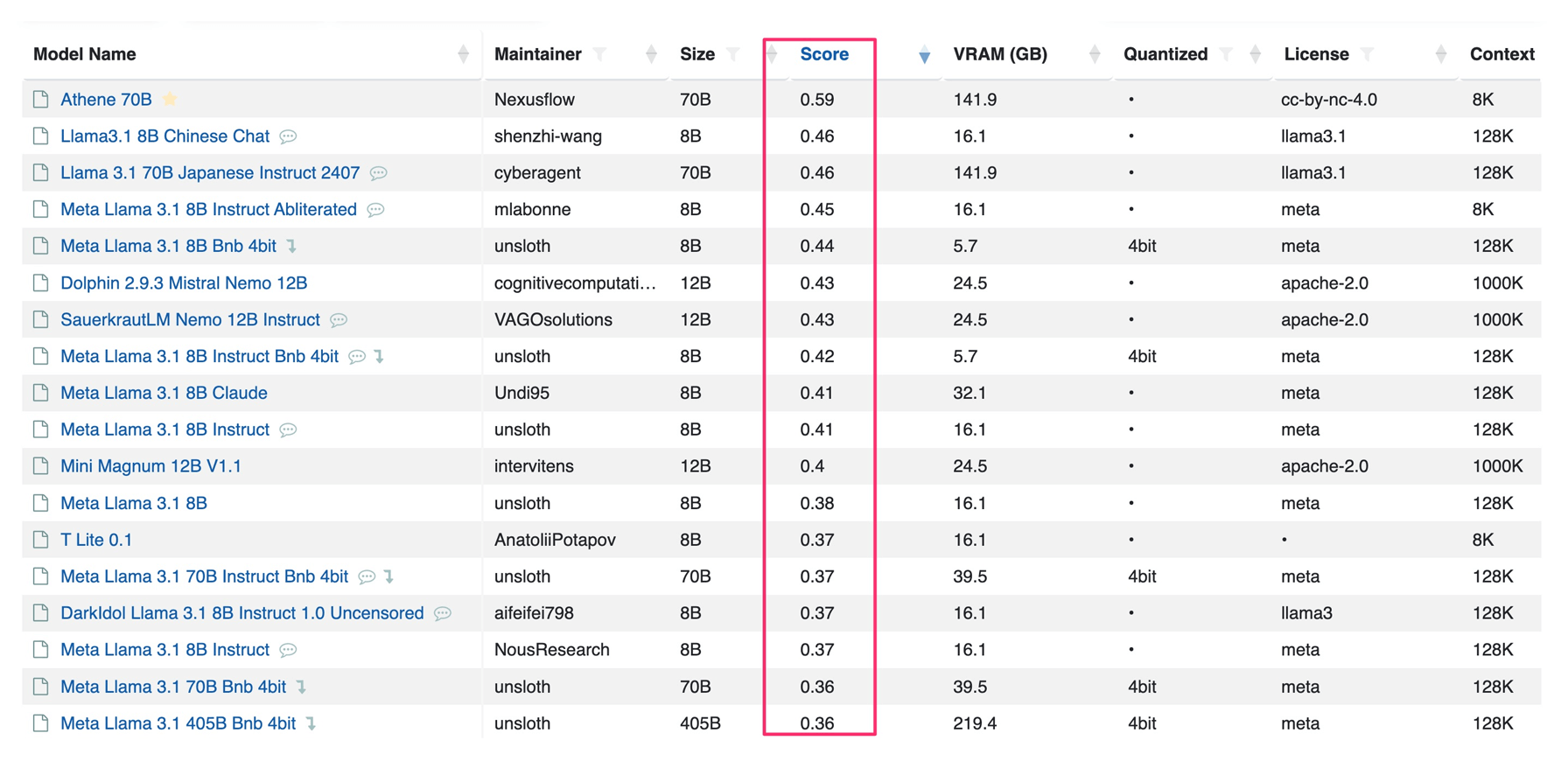The LLM Explorer Rank: A Comprehensive Evaluation Metric for Language Models
28/07/2024 18:41:29
The LLM Explorer Rank (Score) is a comprehensive metric for dynamic evaluation of language models. It combines factors like popularity, recency, and expert ratings to provide a balanced assessment. The system uses normalized weights, logarithmic scaling, and a recency boost to ensure fair comparisons. It allows for flexible weighting and includes a method to compare quantized models. The rank enables users to evaluate models across various categories and criteria, making it useful for both researchers and developers. This approach aims to offer a more holistic view of language model performance than single-factor metrics.

Key Components of the LLM Explorer Rank
- Operational Relevance: The rank combines factors that are particularly relevant to practical implementation concerns:
- Popularity metrics indicate community support and potential for troubleshooting resources
- Recency helps in assessing the model's compatibility with current infrastructure and frameworks
- ELO scores and HuggingFace rankings provide insights into performance and quality
- Resource Optimization:
- The ranking system includes considerations for quantized models, which is crucial for teams optimizing for deployment on resource-constrained environments or edge devices.
- It allows for comparisons of models based on VRAM requirements, helping teams select models that fit their hardware constraints.
- Deployment Flexibility: The rank's weighting structure can be adjusted to prioritize factors most relevant to specific deployment scenarios, such as emphasizing efficiency for edge computing or prioritizing accuracy for critical applications.
- Integration Insights: By providing a unified comparison framework, the rank helps teams assess how different models might integrate with existing systems and workflows.
- Continuous Improvement Alignment: The inclusion of a recency factor aligns with principles of continuous improvement, encouraging teams to consider newer models that might offer performance or efficiency gains.
- Risk Assessment: Popularity metrics and expert evaluations incorporated in the rank can serve as proxies for model stability and reliability, crucial factors in risk assessment for production deployments.
- Scalability Considerations: The rank's methodology, which prevents highly popular models from dominating, helps teams discover potentially more efficient or specialized models that might better suit scalable architectures.
- Benchmark Complementarity: While providing a holistic view, the LLM Explorer Rank also directs users to specific benchmarks, allowing teams to perform deeper, task-specific evaluations when necessary.
For professionals working with language and small language models, the LLM Explorer Rank serves as a valuable tool in the model selection and deployment pipeline.
Recent Blog Posts
-
2024-08-03









